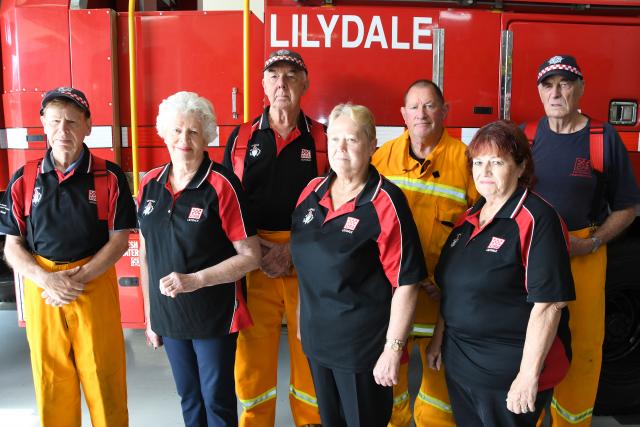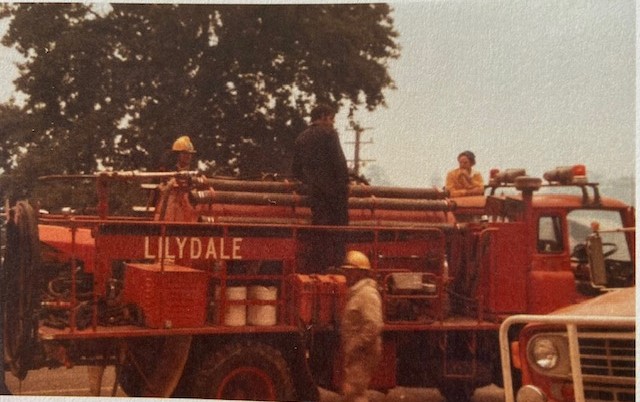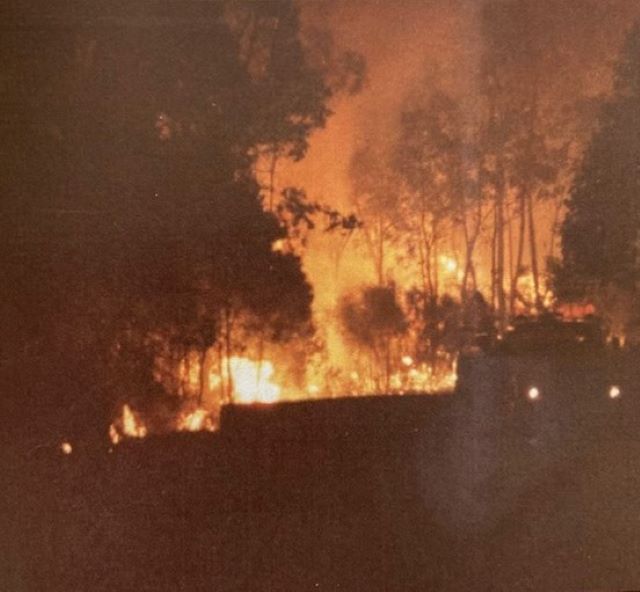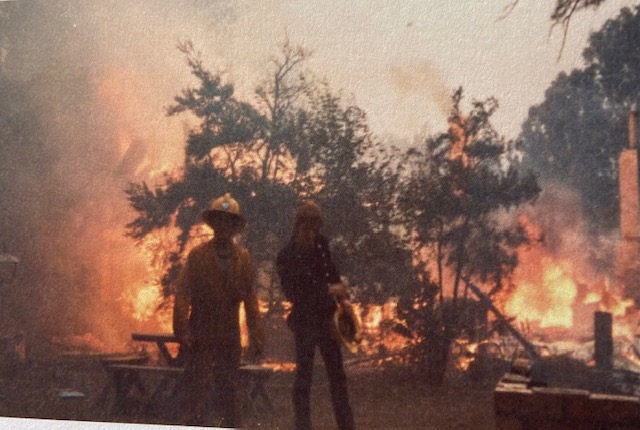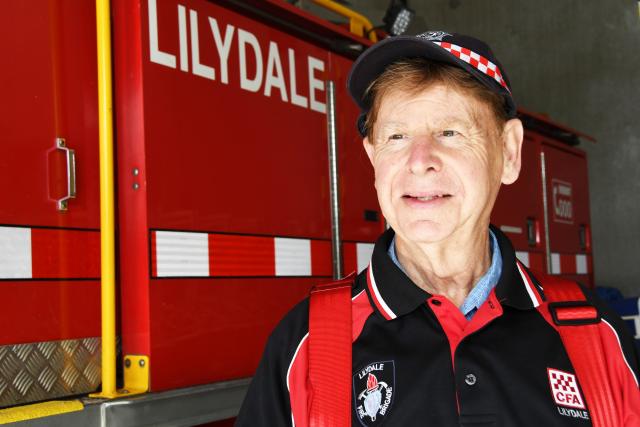
By Mikayla van Loon
After what had been a long and hot summer season, plagued by drought, Lilydale Fire Brigade lieutenant Ron Haines remembers the lead up to Ash Wednesday like it was yesterday.
With fires breaking out as early as November of 1982 across Victoria, firefighters knew it was going to be a busy season.
“Prior to Ash Wednesday our tanker had already been involved in fighting away bushfires. To compound things, we had a fire-bug who was lighting grass and scrub fires in and around the Lilydale and Mount Evelyn area,” Mr Haines said.
“This kept local brigades extremely busy and this was on top of supplying crews for away fires. One of the fires that was lit by the firebug started in Hereford Road and quickly spread towards Old Hereford Road and Old Gippsland Road.”
Mr Haines said those fires could have been a lot worse had it not been for the “quick action of CFA crews that stopped it spreading further”.
When Ash Wednesday came around on 16 February, Mr Haines was assigned as crew leader of Lilydale’s tanker and three other firefighters that headed to Warburton.
“We made our way to Warburton where a fire had been burning in the hills to the south of the town. Hot northerly winds were fanning the fire with temperatures in the forties.
“The fires at the time were in a long line stretching along the back of Millgrove to the outskirts of Reefton.”
Supported by a group officer from the Melba Group and a number of tankers from surrounding brigades, Mr Haines said he and his crew spent the day in Reefton extinguishing spot fires.
While residents were told to evacuate, Mr Haines said many made the decision to stay with their homes and animals.
“What happened next was a firefighter’s worst nightmare. Late afternoon the hot northerly winds were still driving the fire to the south of us.
“Then out of nowhere a south westerly wind change came in catching us unawares. This turned the fire in a completely different direction, creating a massive new fire front, pushing the fire easterly towards the Upper Yarra Dam.
“From basically being at the back of the fire we were now very much in the front line.”
As the fire worsened, so too did the weather conditions, Mr Haines said his team lost contact with the group officer, radio silence meant they had no way of knowing how the fire was advancing or if assistance was coming.
“It must be remembered that weather conditions were extreme with the bush and grasslands experiencing drought conditions, temperatures in the 40s, winds gusting up to 100 kilometres per hour and low humidity – all the recipe of a pending disaster,” Mr Haines said.
With fire burning towards the brigade members, “it was decided that all the tankers would all stay close to one another” in a clearing.
All six tankers made a semi circle, facing the frontline of the fire, dowsing the immediate grass area and had hose lines at the ready, bracing for the worst.
With surrounding residents gathering with the firefighters, the decision was made to retreat to Reefton and the convoy made its way to the Upper Yarra Dam where an evacuation zone had been established.
“I was very proud of the way the CFA volunteer firefighters performed on that day. They were faced with a massive fire that was unpredictable and being fanned by extreme weather conditions.
“Seeing a huge fire coming towards you and having no communications to know if help was on its way is very frightening.
“Everyone remained focused and in control to ensure we protected ourselves and the residents that were with us on that day.”
Mr Haines said since 1983 the advancements in technology have helped firefighters dramatically, changing the way they operate and communicate.
“We did have radio communication during these times, the reception was extremely poor at times and it was affected by atmospheric conditions.
“CFA appliances are now fitted with digital radios both portable and built into each appliance and many appliances/individuals now have mobile phones.
“Communications play a vital role in all aspects of firefighting. It was similar back in those days, but at times technology held us back.”
Using their understanding of fire and the knowledge of how to respond to wind changes, Mr Haines said this saw firefighters in the Upper Yarra area all respond in similar ways.
Still to this day, Mr Haines said he runs into people who lived in the Warburton area during 1983, sometimes in the most strange places.
“My wife and I were in Katherine NT last May as part of a trip on the Ghan when a lady on the same trip asked me if I knew about the Ash Wednesday fires,” he said.
“She went on to say that her husband, as a young man, had been looking after horses at a place called Reefton and about how CFA crews had saved them by helping them evacuate and take shelter behind a number of fire trucks.
“Even after forty years there are still people with vivid memories and stories about the Ash Wednesday fires.”
Recently sitting down with the then Lilydale Fire Brigade captain Frank Whelan, Mr Haines said they both agreed Ash Wednesday was perhaps one of the busiest fire periods the brigade had seen for many years.
“1400 hectares of land were destroyed in the Warburton fire along with 27 homes and 30 other buildings.
“More than 180 fires occurred on 16 February 1983 including eight major blazes and the CFA estimated there were more than 16,000 firefighters involved in the response efforts.
“47 Victorians lost their lives including 14 CFA volunteer firefighters that tragically lost their lives bravely fighting these devastating fires.”


